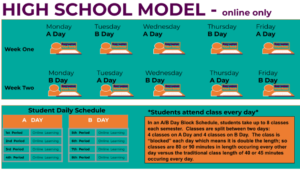Long Day, Long Year, More Learning
Checker Finn makes the case for a long school day and year in this WSJ piece. Here’s the problem statement:
In the face of budget shortfalls, school districts in many parts of the United States today are moving toward four-day weeks. This is despite evidence that longer school weeks and years can improve academic performance. Schoolchildren in China attend school 41 days a year more than most young Americans—and receive 30% more hours of instruction. Schools in Singapore operate 40 weeks a year. Saturday classes are the norm in Korea and other Asian countries—and Japanese authorities are having second thoughts about their 1998 decision to cease Saturday-morning instruction. This additional time spent learning is one big reason that youngsters from many Asian nations routinely out-score their American counterparts on international tests of science and math.
Here’s the case for hybrid or blended models that use online learning to improve productivity by stretching time and money:
Over the long run, technology holds much potential to boost student learning time in flexible ways and at modest cost. We can stipulate that kids are addicted to it; that “virtual” instruction can happen at very nearly any time or place; and that well-designed distance-learning programs (and suitable hardware) enable greater individualization of learning, with each child moving at his/her own pace, diving deeper when warranted, and going back over things they didn’t quite understand the first time. This already happens in the best online schools, of which the U.S. already has several dozen, often operating statewide, such as the Florida Virtual School and Ohio Virtual Academy.
It also happens in “hybrids” that make astute and economical use of computer-delivered instruction, testing and such within brick-and-mortar schools that also have flesh-and-blood teachers. Rocketship Education, a small but growing network of elementary charter schools in San Jose, Calif., is such a creation, skillfully blending online lessons, practice and testing with a small but terrific team of instructors.
To Checker’s excellent piece, I would only add that it’s a shame that the Department is proposing that we put several thousand supplemental educational service providers out of business. They provide targeting tutoring to 500,000 low income students trapped in failing schools. Many of the SES providers have proven very successful at improving achievement and scaling their solution to serve thousands of students. If you want a long day and long year and more productive learning, it would be a good time to embrace these top tutors rather than cutting them off. I applaud the Departments efforts to support improvement of the worst performing schools but much of the funding will be wasted on DIY efforts rather than engaging folks that are getting the job done for kids trapped in bad schools.







Douglas
I'd like to explore how using social media can help bring more social context into schools and how we can use technology to further our understanding of how we can use different methods to not only fix school but use school to fix society where it is not working so well.
Ironically, one of the things that is broken in society is our angst about technology and our culture of "tech fear." If we can't solve this, we can't move upwards.